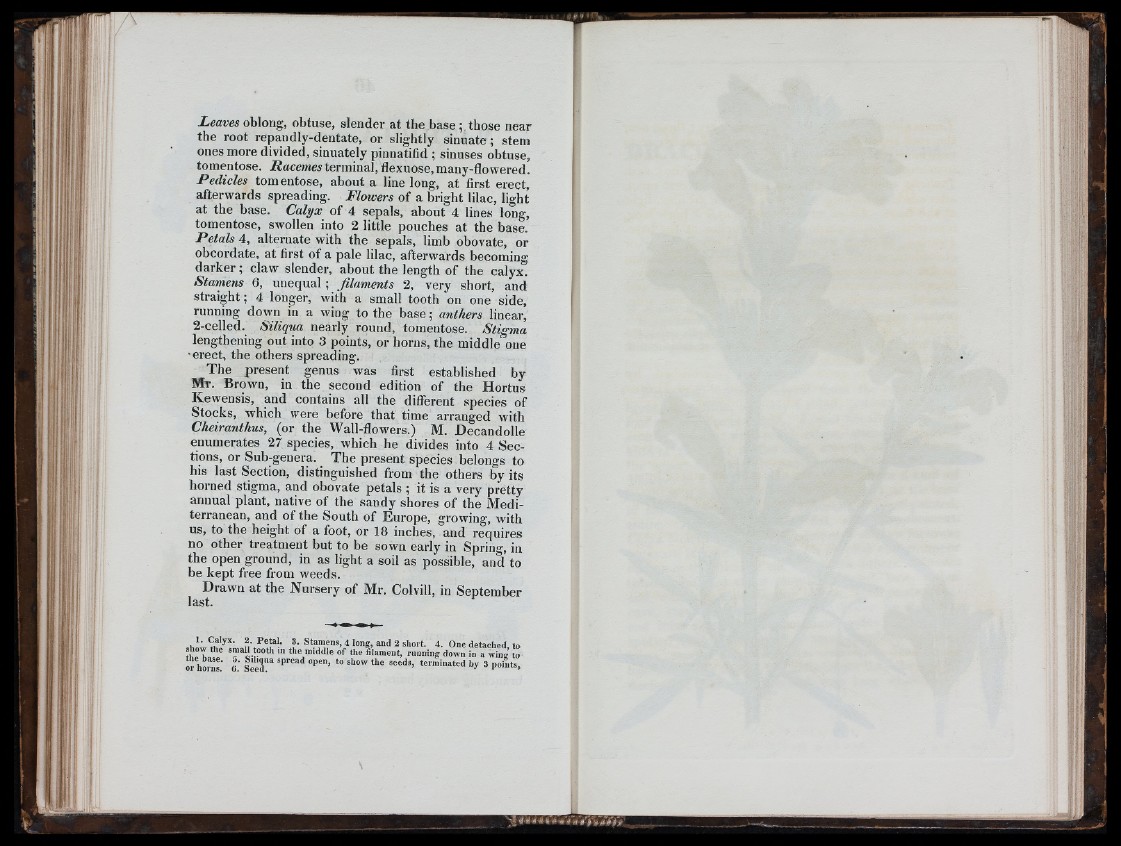
i - ii
Leaves oblong, obtuse, slender at the base ; those near
the root repandly-dentate, or slightly sinuate; stem
ones more divided, sinuately pinnatifid ; sinuses obtuse,
tomentose. Racemes terminal, flexuose, many-flowered.
Pedicles tomentose, about a line long, at first erect,
afterwards spreading. Flowers of a bright lilac, light
at the base. Calyx of 4 sepals, about 4 lines long,
tomentose, swollen into 2 little pouches at the base.
Petals 4, alternate with the sepals, limb obovate, or
obcordate, at first of a pale lilac, afterwards becoming
darker; claw slender, about the length of the calyx.
Stamens 6, unequal; filaments 2, very short, and
straight; 4 longer, with a small tooth on one side,
running down in a wing to the b ase; anthers linear,
2-celled. Siliqua nearly round, tomentose. Stigma
lengthening out into 3 points, or horns, the middle one
•erect, the others spreading.
The present genus was first established by
Mr. Brown, in the second edition of the Hortus
Kewensis, and contains all the different species of
Stocks, which were before that time arranged with
Cheiranthus, (or the Wall-flow'ers.) M. Decandolle
enumerates 27 species, which he divides into 4 Sections,
or Sub-genera. The present species belongs to
his last Section, distinguished from the others by its
horned stigma, and obovate petals ; it is a very pretty
annual plant, native of the sandy shores of the Mediterranean,
and of the South of Europe, growing, with
us, to the height of a foot, or 18 inches, and requires
no other treatment but to be sown early in Spring, in
the open ground, in as light a soil as possible, and to
be kept free from weeds.
Drawn at the Nursery of Mr. Colvill, in September
last.
1. Calyx. 2. Petal. 3. Stamens, 4 long, and 2 short. 4. One detached to
the has »f the filament, running down iu a wing to
S h o in r o ' S e e r * >>y 3 points.